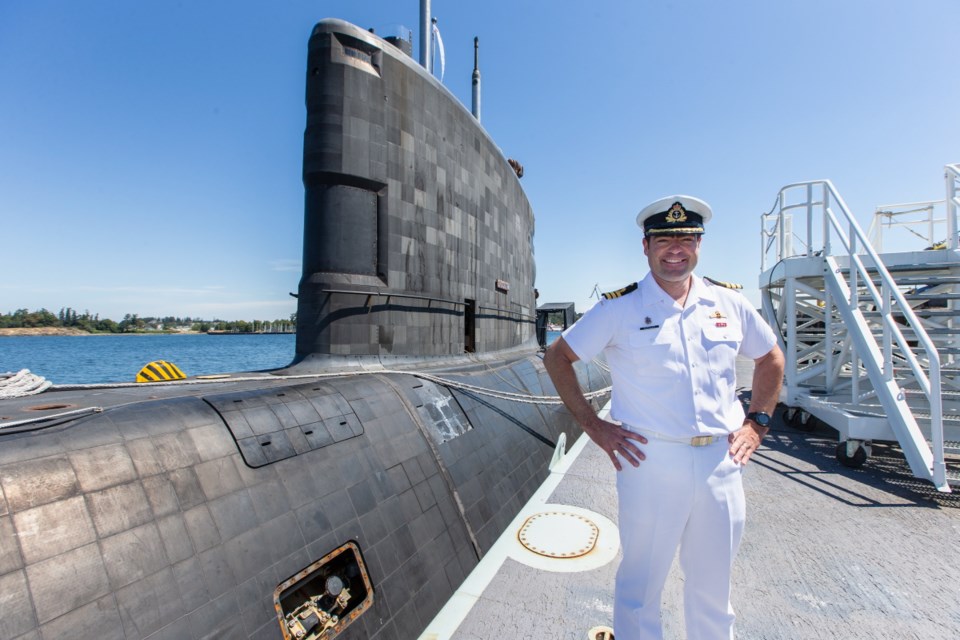HMCS Victoria has a new commanding officer, a long-serving submariner pledging a strong relationship with the vessel’s namesake home city.
In a ceremony Thursday at CFB Esquimalt, Cmdr. J.S. (Steph) Ouellet, a submariner since 1997, became commander of the submarine.
He takes over from Cmdr. A.W. (Andy) MacKenzie.
Ouellet hopes his vessel and crew can achieve a special link with the people of Victoria.
“That the namesake city is so close makes it really interesting for a commanding officer,” Ouellet said. “It’s going to be great to be able to build a strong connection between the submarine and the city.”
His most recent command was HMCS Chicoutimi, another Victoria-class submarine. Ouellet and Chicoutimi completed a 197-day deployment in March, establishing a record for time at sea for that class of boat.
That deployment also solidified diplomatic relationships in Pacific Asia, visiting nations that had not seen a Canadian submarine in decades. Chicoutimi visited Japan, for example, which had not hosted a Canadian sub since 1968.
On the same deployment, Chicoutimi stopped in Hawaii and Guam. The sub also took part in exercises alongside the French and U.S. navies and the Japanese Maritime Self Defence Force.
Capt. Chris Robinson, commander of the Canadian submarine force, said HMCS Victoria is just leaving an extensive, three-year refit process. These refits are scheduled every nine years as part of ongoing maintenance.
The result for Canada’s four submarines means Maritime Forces Pacific and Atlantic can always count on a least one operational submarine. A third can deploy to either coast depending on needs. The fourth will be in dry-dock undergoing the rigorous refit of every system on board.
Robinson said the Canadian submarine force calls it “2 + 1 + 1.”
HMCS Windsor returned on Wednesday to Halifax’s naval base following a nearly five-month deployment in the Mediterranean. HMCS Corner Brook is undergoing work at Victoria Shipyards.
With HMCS Victoria leaving its extensive dry-dock period, Robinson said Ouellet’s job as commanding officer will be to bring the sub up to the readiness achieved by Chicoutimi when it undertook its record Asia-Pacific deployment.
“We have to make sure everything works, we go out to sea and we test and trial everything and then we train the crew to conduct operations,” Robinson said.
“The submarine [Victoria] has a very busy time ahead of her, lots of sea time, lots of varied employment,” he said. “It’s going to be a very taxing and demanding time for the crew.”
All four of Canada’s submarines are diesel-electric vessels purchased from the British Navy in 1998 for $750 million, the first of which was commissioned in 2000. There have been problems, including a fire aboard HMCS Chicoutimi in 2004 that killed Lt. Chris Saunders and sent two others to hospital during its first Canadian voyage.
But in March at the conclusion of Chicoutimi’s record voyage Robinson told the Times Colonist the technical issues have been long addressed and the ongoing readiness of Canada’s submarine force could be regarded as “steady-state.”
ABOUT VICTORIA-CLASS SUBMARINES
Speed: 12 knots on the water’s surface, 20 knots submerged
Patrol endurance: About eight weeks
Complement: 48 crew and five trainees
Diving depth: More than 200 metres
Source: Royal Canadian Navy



